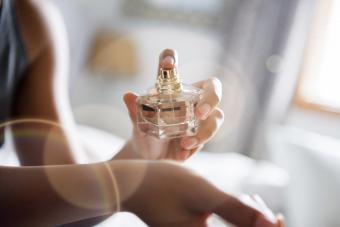
Stage makeup is the key component to a successful performance. Theatre is the earliest form of entertainment, dating back to the Greeks in B.C. Even with strong competition from new technology and similar styles of amusement, such as television and film, theatre has remained popular. As the times have changed, so have the stage and the costumes. The experience of a live audience and live performers is what creates the exciting element that drives us to experience this pleasure. The stage makeup is a major piece of the puzzle in ensuring the unique experience theatre provides.
Stage Makeup Artist
The artist responsible for stage makeup is a special type of individual. The work is repetitive, but also exciting at the same time. The theatre makeup artist must posses a strong knowledge of both wigs and facial hair, in addition to makeup application skills. Therefore, previous training in theatre, makeup and hairdressing is crucial for success in stage makeup.
Smaller theatre organizations expect the actors to create their own makeup looks. Stage makeup artists are hired for special effects, hairdressing and advice. Makeup artists will design the particular looks and teach it to the actors to apply themselves. This is particularly useful for long running productions and traveling shows.
A stage makeup artist works for the overall production designer, as a piece of the complete look and costume for the performance. These jobs are actually an integral part of the complete theatre team, not independent work. Creativity at this level is actually not an asset. The ability to independently follow through with a particular direction is a much greater skill for the theatre makeup artist. The artist must be able to master an identical look consistent between each performance. This application has to be performed quickly, as scene and costume changes are usually only a few minutes at a time.
Stage Makeup Techniques
As theatre performances have transformed over the years, so has the makeup and costumes. Most recently the concept of a more delicate look in makeup application for the stage has emerged. This enables the actors to portray a more realistic appearance suitable for the front row audience. As these are the customers who pay the most for their tickets, the directors have focused on pleasing them. Performances are often recorded for television and overdone makeup distracts from the production on camera. Smaller and intimate theatres utilize a more street makeup technique, while the larger auditoriums necessitate a stronger stage makeup application to meet the distance of the audience.
Makeup Types
Stage makeup requires some particular unique techniques due to the nature of the theatre. Makeup has to last the entire scene without touch ups, verses a fashion photo shoot where breaks can be taken for a fresh application. The types of makeup also affect the artist's ability to comply with long scenes and quick costume changes. Water-based makeup is best for the quick removal, but tends to bleed easier in an active scene. Oil-based makeup is better for the longer and active theatre scenes, but a mess to wash off. Powder-based makeup is the ideal as it lasts long and is easy to remove, but it flakes off the skin easy, which can cause actors to slip on stage if it clings on feet or the floor. For each scene and performance, the actors, designers and makeup artist have to evaluate each of the pros and cons to determine the correct makeup type to use.
During a theatre show, makeup is used to enhance desired features, like wrinkles on the old and key emotion elements like the eyes and lips. Wax is often used for three-dimensional work, usually to enhance a nose or some special effect. Makeup must be applied strongly, but cleanly. This enhances the look of the face without smoothing the features at a distance. Intense makeup is necessary to fight the washing out effects of lighting and distance. Ultimately, the placement is as important as the intensity. Strong eye makeup, darker lipstick colors and vibrant cheeks are key to producing the perfect effect. While a clean look is crucial, a clown is usually not what the director is looking for. The trick is to produce a clean look that is also blended. This is why the expert skills of a makeup artist are an important part of the theatre performance.
Lighting
Lighting is another factor that stage makeup needs to counterbalance. A large variety of lighting is commonly used within a performance and the makeup has to function appropriately. Typically, theatre lights produce cold tones, effectively bleaching the makeup colors. Theatre makeup is used to add more warm tones to the face through reds and oranges. Complicating this process even further, the lights also change how the makeup colors appear to the audience. White looks blue, so cream colors are used instead. Blue looks brown, thus brown is more common in stage makeup then blue. Yellow washes out completely, so reds, oranges and pinks replace the yellow tones.
Final Check
During the dress rehearsal, the makeup artist will be found sitting in the audience. It is necessary to double-check the performance of the makeup application standing against the lighting and distance. Moving from row to row will help them to determine how the entire audience will view the performers. Ultimately, the farthest rows can't see the actors' faces, so makeup is mostly for the front rows and enhancing the entire look of the show.







